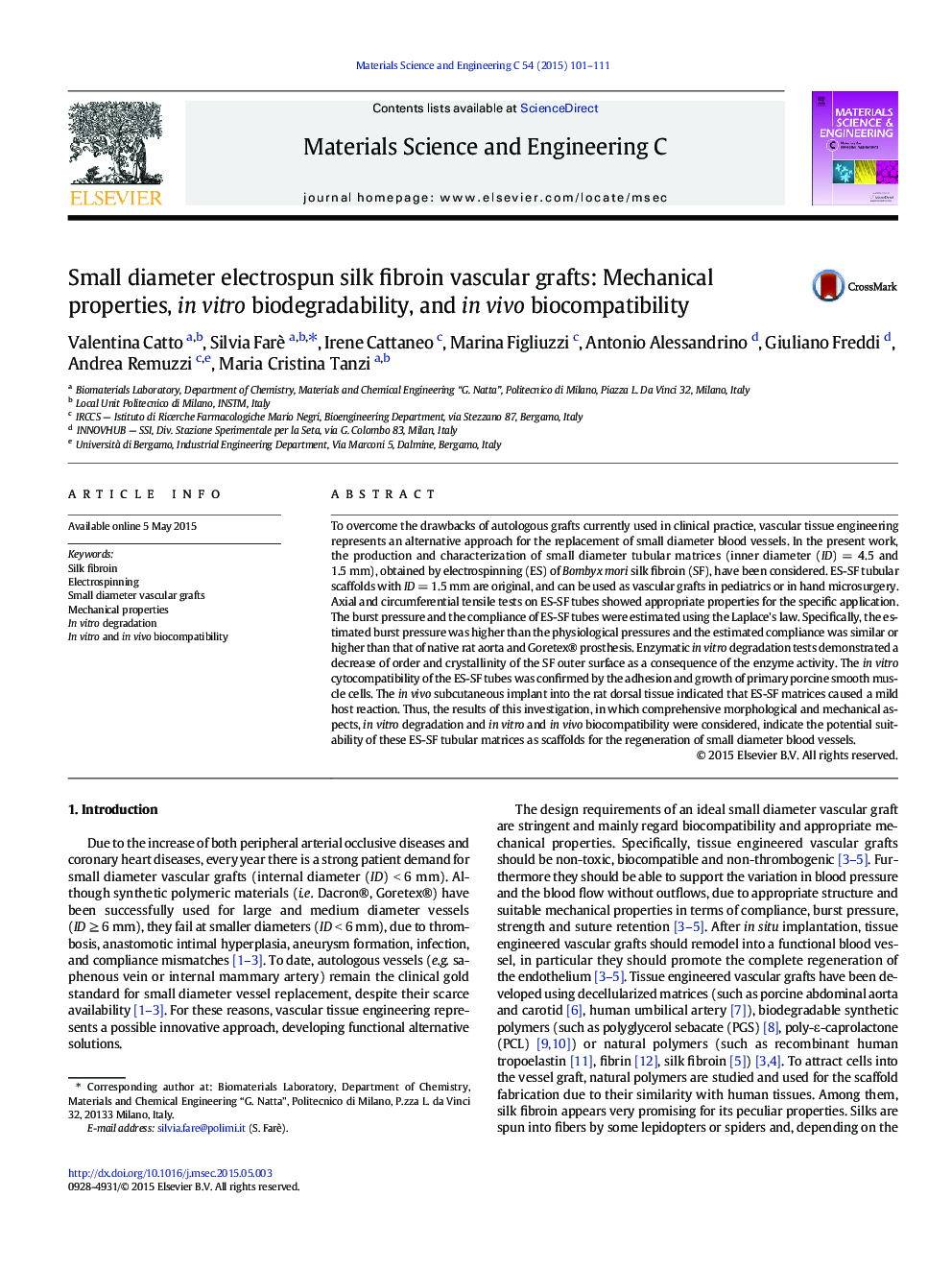| کد مقاله | کد نشریه | سال انتشار | مقاله انگلیسی | نسخه تمام متن |
|---|---|---|---|---|
| 1428128 | 1509167 | 2015 | 11 صفحه PDF | دانلود رایگان |

• Development of electrospun silk fibroin tubes for vascular applications
• Electrospun silk fibroin tubes with 1.5 mm inner diameter are original.
• Electrospun silk fibroin tubes showed appropriate mechanical properties/
• Electrospun silk fibroin tubes were thoroughly characterized.
To overcome the drawbacks of autologous grafts currently used in clinical practice, vascular tissue engineering represents an alternative approach for the replacement of small diameter blood vessels. In the present work, the production and characterization of small diameter tubular matrices (inner diameter (ID) = 4.5 and 1.5 mm), obtained by electrospinning (ES) of Bombyx mori silk fibroin (SF), have been considered. ES-SF tubular scaffolds with ID = 1.5 mm are original, and can be used as vascular grafts in pediatrics or in hand microsurgery. Axial and circumferential tensile tests on ES-SF tubes showed appropriate properties for the specific application. The burst pressure and the compliance of ES-SF tubes were estimated using the Laplace's law. Specifically, the estimated burst pressure was higher than the physiological pressures and the estimated compliance was similar or higher than that of native rat aorta and Goretex® prosthesis. Enzymatic in vitro degradation tests demonstrated a decrease of order and crystallinity of the SF outer surface as a consequence of the enzyme activity. The in vitro cytocompatibility of the ES-SF tubes was confirmed by the adhesion and growth of primary porcine smooth muscle cells. The in vivo subcutaneous implant into the rat dorsal tissue indicated that ES-SF matrices caused a mild host reaction. Thus, the results of this investigation, in which comprehensive morphological and mechanical aspects, in vitro degradation and in vitro and in vivo biocompatibility were considered, indicate the potential suitability of these ES-SF tubular matrices as scaffolds for the regeneration of small diameter blood vessels.
Journal: Materials Science and Engineering: C - Volume 54, 1 September 2015, Pages 101–111